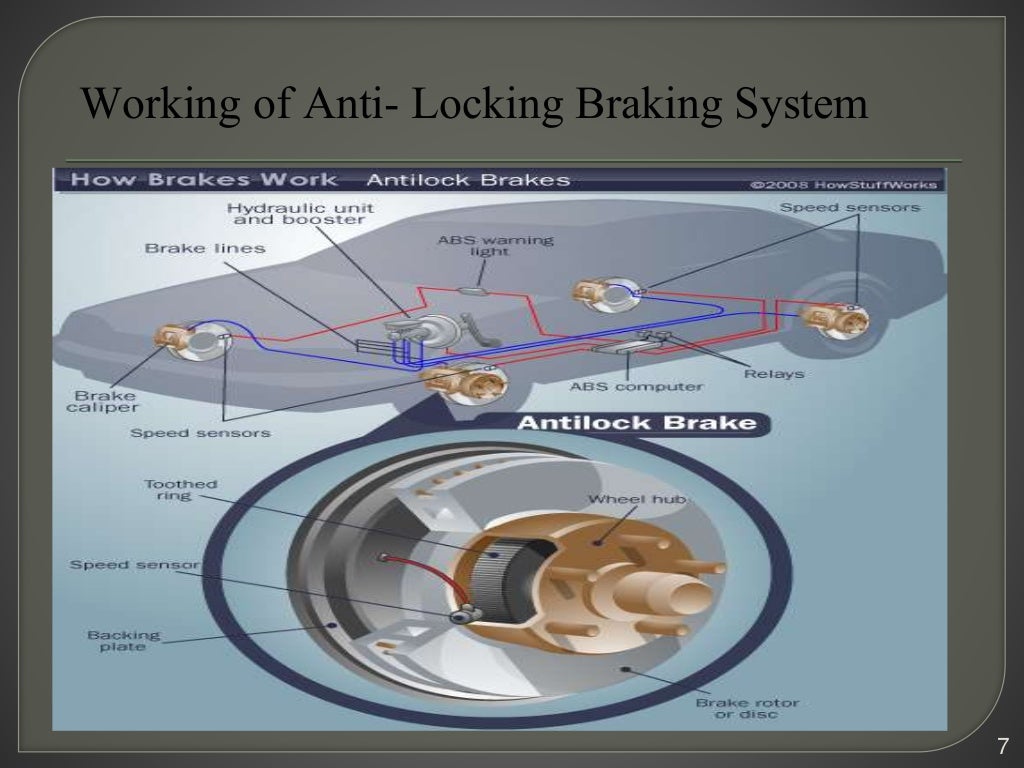

This latter function, depending on its specific capabilities and implementation, is known variously as electronic brakeforce distribution, traction control system, emergency brake assist, or electronic stability control (ESC). The Royal Enfield Super Meteor was equipped with a working anti-lock braking system. Modern versions may not only prevent wheel lock under braking, but may also alter the front-to-rear brake bias. Apply existing Anti-Lock Braking Systems (ABS) requirements to all vehicles of category. Since ABS was introduced in production vehicles, such systems have become increasingly sophisticated and effective. The development of draft language for updating the GTR involved. Two controllers of PID and fuzzy logic are tested for analysis and comparison. It performs more accurately than conventional. Although ABS generally offers improved vehicle control and decreases stopping distances on dry and some slippery surfaces, on loose gravel or snow-covered surfaces ABS may significantly increase braking distance, while still improving steering control. This paper develops a real laboratory of anti-lock braking system (ABS) for vehicle and conducts real experiments to verify the ability of this ABS to prevent the vehicle wheel from being locked while braking. the success story of ABS began with the start of production of the first electronically controlled four-wheel antilock braking system for passenger cars. Click to enlarge Anti-lock braking systems (ABS) were first developed for aircraft in 1929, by the French automobile and aircraft pioneer, Gabriel Voisin. The automotive anti-lock braking system operates on different mechanisms as compared to conventional brakes.

The modern ABS system was invented in 1971 by.
#Development of anti lock braking system drivers#
ABS operates at a much faster rate and more effectively than most drivers could manage. The first fully-electronic anti-lock braking system was developed in the late-1960s for the Concorde aircraft. Both systems contain an electronic control unit (ECU), which compares signals from each wheel sensor. Traction control systems (TCS) limit the amount of traction force generated at the wheels to prevent loss of traction. It is always observed that a steady state error of 10% occurring in all the control system models.Safety anti-skid braking system used on aircraft and land vehicles Symbol for ABS ABS brakes on a BMW motorcycleĪBS is an automated system that uses the principles of threshold braking and cadence braking, techniques which were once practiced by skillful drivers before ABS was widespread. Antilock braking systems (ABS) are closed-loop devices designed to prevent locking and skidding during braking. Using the linear control strategies like P - type, PD - type, PI - type, PID - type the effectiveness of maintaining desired slip ratio is tested. Early ADAS include electronic stability control, anti-lock brakes, blind spot information systems, lane departure warning, adaptive cruise control, and traction control. It is used in present automobiles for improved safety and. By applying a bias braking force system, response is obtained using Simulink models. 1971: Imperial Archived at the Wayback Machine became the first production car with a 4 wheel computer-operated anti-lock braking system. ADAS were first being used in the 1970s with the adoption of the anti-lock braking system. Current Antilock Braking System (ABS) is controlled based on wheel deceleration and slip. In present work first of all system dynamic equations are explained and a slip ratio is expressed in terms of system variables namely vehicle linear velocity and angular velocity of the wheel. WABCO begins to develop its own electronic systems based on analogue and inte- grated. The slip ratio is represented in terms of vehicle speed and wheel rotation. teamwork push both system development and vehicle testing ahead. Controller needs to provide a controlled torque necessary to maintain optimum value of the wheel slip ratio. The vehicle model often is in nonlinear form. The dynamics of the controller needed for antilock braking system depends on various factors. Antilock braking systems are used in modern cars to prevent the wheels from locking after brakes are applied.


 0 kommentar(er)
0 kommentar(er)
